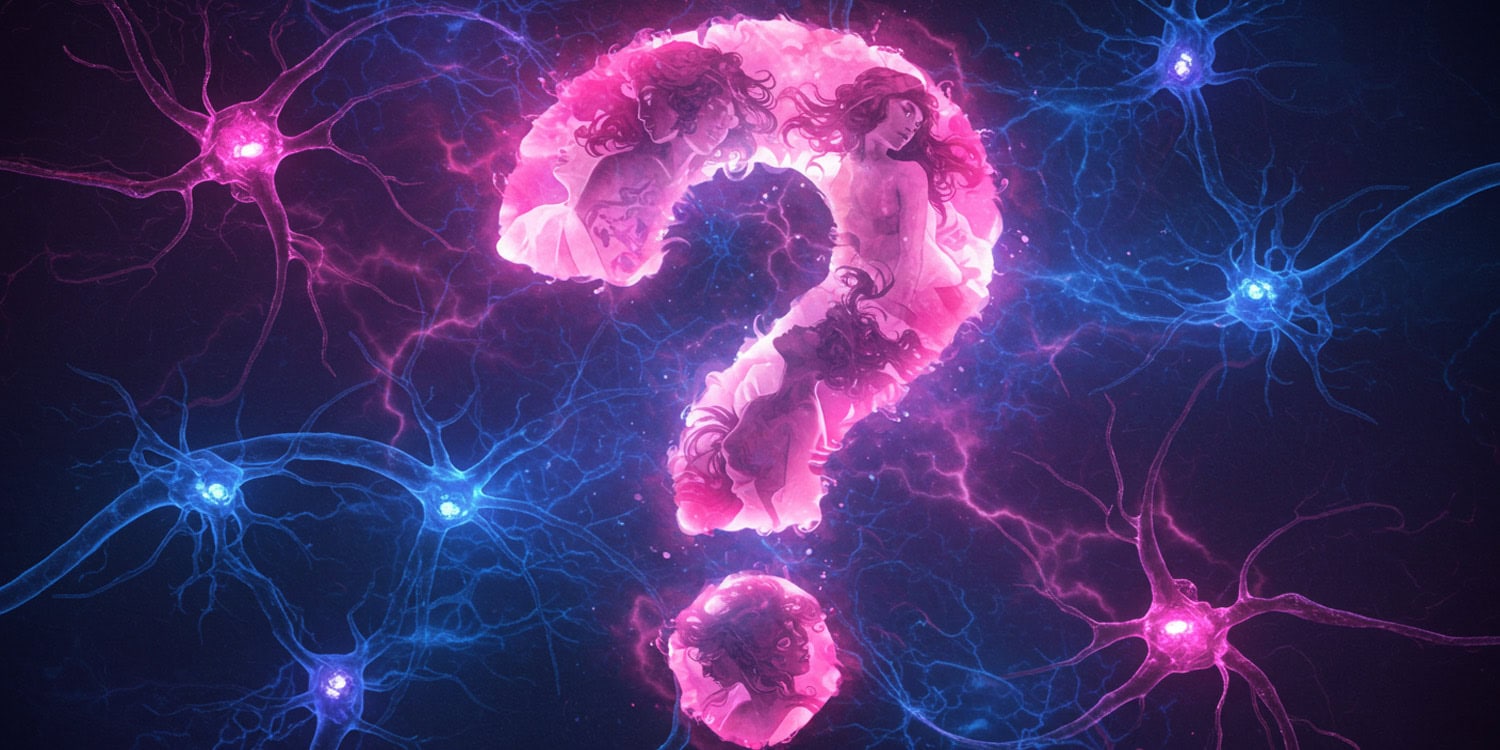Researchers have long been fascinated by the female orgasm. It isn’t necessary for a woman to orgasm during sexual intercourse to become pregnant. By contrast, in men, orgasm and ejaculation are synchronized. It is almost always necessary for a man to orgasm in order to ejaculate, inseminate and thus impregnate a female partner. This incongruity between the male and female sexual response has left scientists curious as to what purpose, if any, the female orgasm might have.
One theory is that the female orgasm helps promote high quality mate choices among women: one of the driving mechanisms of sexual selection. Just as peahens gravitate toward peacocks with more flamboyant tails, women may use orgasm as a cue for mating. In most species, males compete for access to females, while females will only mate with their preferred males.
This could be a consequence of the dramatically fewer gametes (ova/eggs) females are born with for a lifetime, compared to the billions of gametes (sperm) males are able to produce throughout theirs, which renders the female gamete a precious asset. Reproduction also has greater consequences for females than males, since they are more impacted by pregnancy (and its associated risks), childbirth, breastfeeding and even childrearing.
As these researchers note: “Mate choice is not a trivial issue. One of the best ways to ensure that genes find their way into subsequent generations is to pair them with a member of the opposite sex who is healthy, reproductively viable, and has high-quality genes.”
Due to the significance of its implications, various studies have tested the hypothesis that female orgasm functions as a way of promoting high-quality mate choices.
Studies have reported that the female orgasm is related to certain male characteristics. For example, males who are viewed as funny, creative, warm, faithful and better smelling elicit more orgasms in their female partners, and put in more effort to induce partner orgasm. Women with more masculine and dominant partners report more frequent and earlier orgasms, and women with more attractive male partners are more likely to have experienced orgasm during their most recent sexual encounter.
Relatedly, women with partners their friends find attractive report greater orgasm frequency. This particular finding provides support for the “sexy sons” hypothesis, which posits that a male whom other women find attractive will sire offspring that inherit this quality (“sexy sons”), who will be deemed attractive by women of the following generation.
One study found that a woman’s orgasm frequency was associated with her partner’s family income, self-confidence and attractiveness. The authors reported that “love” came in at only fifth place, following qualities like how protected the women felt by their partners or how much of a catch they thought their partners were.
The male characteristics associated with female orgasm are believed to be proxies for good genes, fertility and health. The mate-choice hypothesis suggests that males who elicit more frequent and intense orgasms in females thereby signal that they are high-quality mates. Furthermore, female orgasm can act as a heuristic for determining which males are likely to make good fathers. These factors suggest that the female orgasm provides women with feedback about their mate choices.
These findings could have limitations. Perhaps orgasm frequency or intensity positively influence ratings of other qualities in one’s partner (for example, intelligence and generosity). Do high-quality male characteristics elicit female orgasm or does the positive experience of orgasm encourage women to see high-quality traits in their partners? It wouldn’t make much sense for a woman’s self-reported orgasm frequency to influence ratings of her partner’s family income, shoulder width, muscularity or how attractive her friends find him. But perhaps it may exaggerate her perception of more subjective features that are difficult to measure, such as her partner’s sense of humour (also associated with orgasm frequency).
Some recent research challenges aspects of the mate-choice hypothesis. For instance, a study found that while female orgasm frequency is associated with certain partner traits—such as kindness, intelligence, and empathy—no significant relationship was found for traits like financial prospects, dominance, or masculinity/femininity. This suggests that the orgasm-mate selection link may not be as straightforward as previously assumed.
An alternative explanation suggests that female orgasm evolved not for mate selection, but for pair bonding. Research indicates that orgasm frequency is strongly linked to relationship satisfaction and expected relationship duration, rather than to a male’s commitment level or genetic quality. This supports the long-term pair bonding hypothesis, which suggests that female orgasm serves to strengthen emotional attachment and maintain stable relationships.
Further, the evolutionary history of orgasm suggests that its origins may not be tied exclusively to mate selection. Some researchers argue that female orgasm evolved from a primitive reflex of gamete expulsion, similar to ejaculation in males, which may have later been repurposed for other functions. Over time, orgasm may have played a role in increasing sexual activity in species with lower reproductive rates, thereby promoting reproduction rather than serving as a direct selection mechanism for high-quality mates.
The female orgasm, then, is not only a feel-good experience that encourages sexual activity and thus reproduction but also a mechanism that may provide women with valuable information about their mates. Whether it functions as a filter for selecting high-quality partners, a reinforcement for pair bonding, or something else entirely, its role is likely more complex than any single explanation suggests.
The evidence is conflicting, and the debate is ongoing—but if orgasm has persisted in women, it’s because, in one way or another, it serves a purpose.




